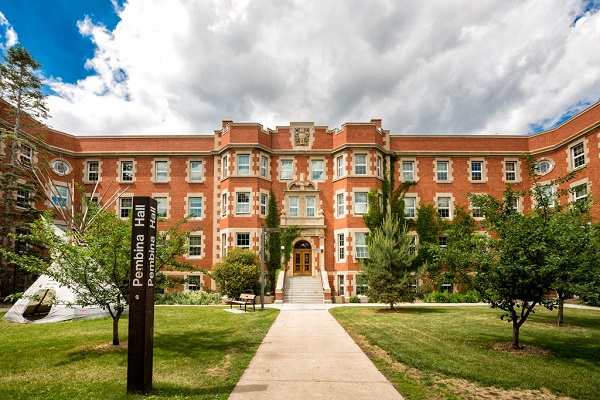University of Alberta: Biosensors embedded in bandages could monitor diabetic foot wounds to prevent amputations
Simon Palfreyman and Manisha Gupta got to talking about their research after a meeting. He’s an expert in wound care and she’s a leader in making biosensors that can be attached to the skin to monitor things like temperature or the presence of germs.
Palfreyman, an assistant professor in the Faculty of Nursing, expressed frustration that despite the best efforts of health-care teams, more than a thousand Albertans a year lose their lower limbs to amputation due to complications from diabetic foot ulcers.
And that’s when inspiration struck: Could the tiny sensors that Gupta’s team in the Faculty of Engineering has developed be used to detect and treat foot wounds before they get bad enough to require amputation?
Gupta and Palfreyman reached out to Douglas Zochodne, a neurologist and neuroscientist in the Faculty of Medicine & Dentistry, who has expertise on the nerve damage that makes diabetic foot wounds dangerous. And a new team was born.
Early intervention is essential
The goal of their new joint project is to develop and test a new sensor that can be embedded in a wound dressing or used like a swab to analyze the wound. The sensor will measure up to four variables—likely electrolytes, temperature, pressure and glucose levels—so that clinicians can monitor progress, detect complications and determine precise treatments.
“The main thrust is customized medicine tailored for each patient,” said Gupta.
“The idea is to get there early when wounds are less complicated and cheaper and easier to treat, rather than when the wound is enlarged and not healing, and issues such as infection are already established,” said Palfreyman. “Urgent medical intervention is needed with diabetic foot wounds because they can deteriorate quite quickly.”
Zochodne explained that diabetes causes nerve damage known as diabetic polyneuropathy, which means some people may injure their skin or develop a severe ulcer without realizing it. The lack of nerves also slows healing.
“Treating these wounds is like working at the back of a cave with no lights on,” said Zochodne, who is director of the Neuroscience & Mental Health Institute and divisional director of neurology.
“We don’t know the basic biochemistry of what’s going on in these wounds and why they don’t heal, so this enabling technology that Dr. Gupta has developed has fantastic possibilities.”
Device could help those in remote areas
Alberta Health Services’ Diabetes Foot Care Clinical Pathway recommends regular foot screening for the estimated one in four Albertans who have diabetes or pre-diabetes. More than half of people with diabetes will develop polyneuropathy and 15 to 20 per cent will develop foot ulcers. Outcomes are often poor—approximately three of four patients will die within five years of a lower limb amputation, according to Diabetes Educators Calgary.
Existing technology does not allow for localized measurements within wounds, Gupta said. “The novelty of this is we’re going to monitor multiple parameters within the real wound environment.”
Gupta’s team has already developed biosensors to measure pressure, glucose and ion levels. The transistor-based sensors are 3-D printed using biocompatible materials such as gold and organic semiconductors that work well in an aqueous environment and will not be rejected by the body’s immune system. The sensors can be as small as ten microns, about one-seventh the width of a human hair.
The new sensors for diabetes foot wounds will be developed and tested on diabetic animals, and later, on human volunteers. The team is working with an industry partner, Clinysis EMR, a local data analytics company.
Gupta envisions also developing an app that would allow patients to monitor their own wound sensors. Palfreyman said the system could be particularly valuable for people living in remote communities who do not have access to in-person clinical care.
The project was recently granted $250,000 through the Kaye Competition, a partnership between the University Hospital Foundation, the University of Alberta Hospital and the Kaye Edmonton Clinic.

